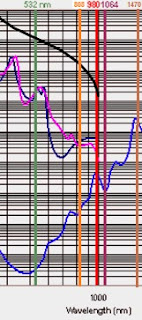Laser For Lipolysis
Laser lipolysis is recognized as an effective, non-surgical solution for fat removal and body reshaping. Its appeal lay in the procedure’s ability to treat localized fat deposits and correct body asymmetries with apparent decreased risk compared to traditional liposuction. The energy emitted by the laser uses volumetric heating to destroy fat cells, contract skin and stimulate collagenesis. After long time clinical comparision, it has been found that the 980 nm diode laser is consistently successful in inducing the required fat-heat and skin-heat interactions necessary for optimal results in 2012. 
Now, the 1210nm wavelength has absorption-affinity for Lipid-Rich Tissue and has demonstrated to stimulate adipocytes and mesenchymal cells of the subcutaneous tissue, with a new concept: Selective Photothermostimulation (SPS). The application in Liposuction of this wavelength is determined by its preservation of the integrity of adipocytes, making possible the use of these materials for fat grafting in Liposculpture, Breast Reconstruction or as filler in Face Rejuvenation, proven that this technique is less traumatic.
Although laser lipolysis is not intended to replace traditional liposuction, it offers patients a procedure that yields similar benefits with fewer complications and faster recovery.
Now, the 1210nm wavelength has absorption-affinity for Lipid-Rich Tissue and has demonstrated to stimulate adipocytes and mesenchymal cells of the subcutaneous tissue, with a new concept: Selective Photothermostimulation (SPS). The application in Liposuction of this wavelength is determined by its preservation of the integrity of adipocytes, making possible the use of these materials for fat grafting in Liposculpture, Breast Reconstruction or as filler in Face Rejuvenation, proven that this technique is less traumatic.
Although laser lipolysis is not intended to replace traditional liposuction, it offers patients a procedure that yields similar benefits with fewer complications and faster recovery.



















.jpg)



